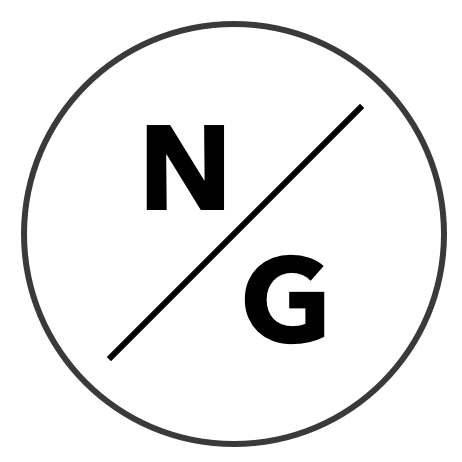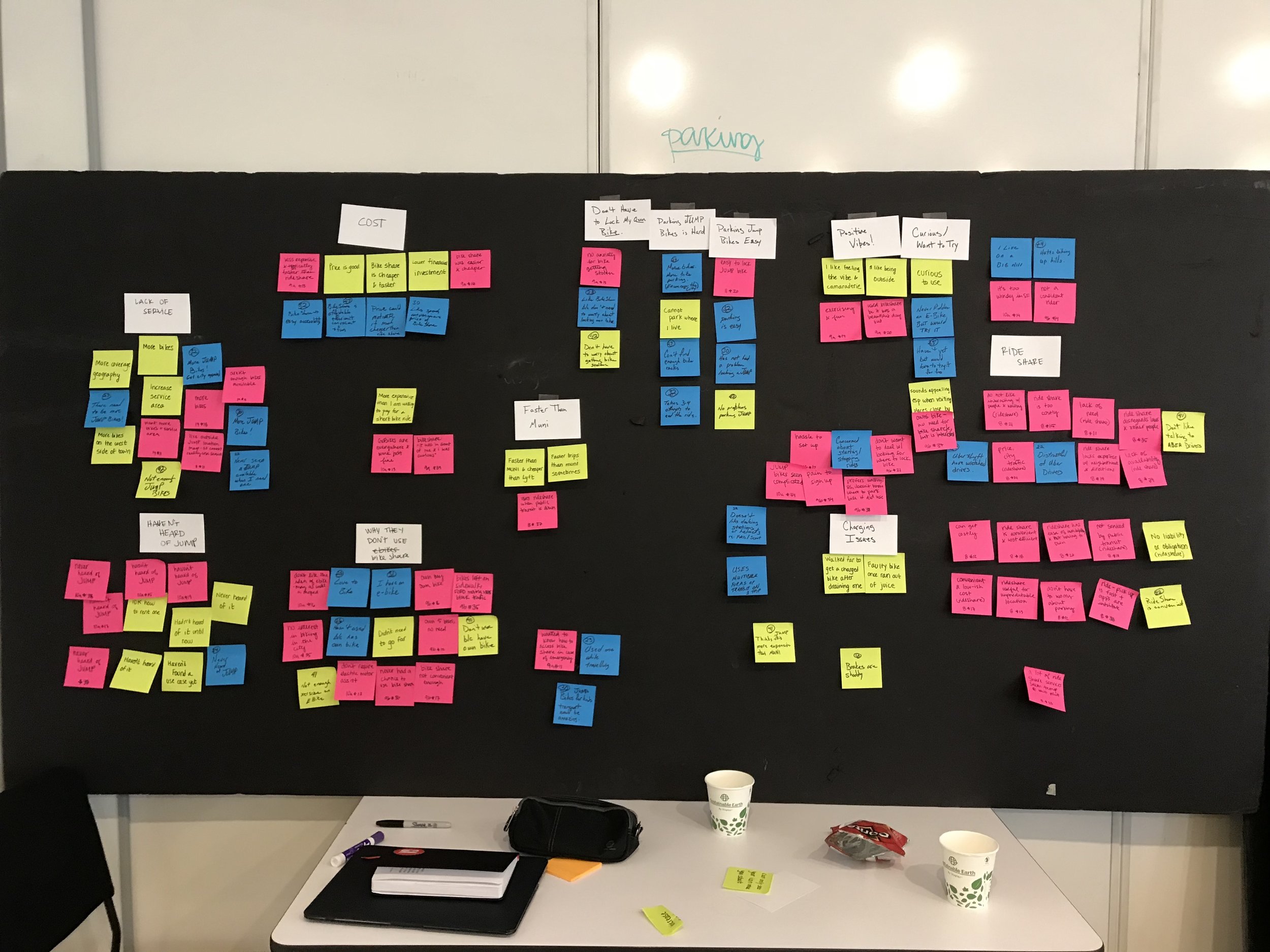OVERVIEW
Context: For this concept project, our challenge was to increase the customer’s level of acceptance, utility, and the use of JUMP Bike share while maintaining accountability, community and growth of goodwill and positive brand image amongst the San Francisco residents.
Team: 3 People
Duration: 10 days
Tools: Pen, Pencil, Paper, Sketch and InVision
BACKGROUND CONTEXT
About the Problem Space
Numerous ride sharing companies such as FordGo Bikes, Lime, Uber, and etc. help people get around in San Francisco. While some of these ride sharing companies have bikes, JUMP stands out from the crowd since they only have electronic bikes in their domain. San Francisco is notorious for her hills, and having an electronic bike is an affective way to travel without breaking a sweat.
However, JUMP is a dockless bike sharing company. This means that people can park the bikes anywhere within the system area or at a designated hub. This causes the problem of inappropriately parked bikes.
WORKFLOW
How We Spent Our Time
01 DISCOVER
What Else is Around?
We did an extensive competitive analysis to learn and analyze the general landscape of transportation methods. After learning about our competitors ranging from Ford GoBikes to MUNI, we discovered that JUMP is also leading in terms of cost. While Lime app interface is easier to use, it is more expensive than JUMP bikes. This gave JUMP a major advantage over its competitors.
First Ride Experience
None of us from my team tried JUMP Bike before, and personally, I never biked in SF because I was scared of the hills and traffic. So we went with out gut and decided to try it out!
Key Takeaways:
JUMP Bikes are fun to ride and the electric assist was helpful while riding on the hills.
Onboarding experience was confusing and intimidating.
User Reviews Audit
Reviews are from Apple App Store
We continued our secondary research and discovered more user pain points. The main trends in the user problems were:
that users felt a lack of guidance and feedback on their first ride
frustrated with the location functionality
left confused due to lack of clear instructions and feedback on charges and payments.
Getting Out of the Building
We went to the JUMP’s drop off zone by Bush and Market Street to conduct out first round of contextual inquiry. This helped us to learn more about how people interacted with the bikes. We had the opportunity to speak with 2 JUMP employees and learned about an existing solution for maintaining user accountability.
They told us that whenever they come across an inappropriately parked bike, they simply take a photo and post it on their slack group. The situation is then handled by the customer service and they warn whoever last used the bike.
Hearing What the Public Had to Say
After some contextual inquiry and secondary research, we created a 20 question survey and had 45 people who participated. We asked questions about ride shares in general, if they used bike shares, and then narrowed it in on if they ever used JUMP.
Key Findings
People were interested in bike share for the low investment
42% of people who used JUMP did not know they could return bikes to a drop off zone in exchange for credit
Majority of the participants wanted an increase in the service area and more bikes
Listening To Them
We tested to see the decrease in bikes around Financial District after receiving an overwhelming responses of bikes not being available. We found that the bikes disappeared around peak commute hours.
02 DEFINE
Piecing It Together
The next step was to organize our survey responses and interviews into different categories to develop trends. With the help of affinity mapping, we were able to discover the following themes:
Ride share in general was ideal for cost and convenience
Most participants had not heard of JUMP
Regular users truly enjoyed using the service because it was low investment and no risk of bike being stolen
Users needed better instructions
THE PROBLEM
Apart from the initial problem of inappropriately parked bikes defined by the business, we also discovered that users need help with onboarding, and that the app in general needs better instructions and feedback.
THE SOLUTION
We believe that by giving users the ability to report problems and issues they observe involving JUMP Bikes in the community will solve the issue of JUMP Bikes being inappropriately parked around the city, blocking traffic and pedestrian flows, and causing ill will among the broader community. This is enabled by an easily accessible function within the mobile app enabling users to photograph and report the location of inappropriately parked bikes in exchange for credit toward free rides.
03 VALIDATE
Testing Our Hypotheses
After receiving 6 survey responses to our follow up survey and conducting 15 mini interviews followed by a poll to test our proposed solution, we discovered a majority of enthusiasm from our participants on reporting a photo in exchange of free credit.
Further, we did another round of contextual inquiry at Mission Dolores Park and talked to 4 JUMP Bike users and 1 JUMP employee. They validated our findings that people aren’t aware of JUMP’s credit system and we discovered a positive response to our proposed solution.
Contextual Inquiry at Mission Dolores Park
Follow Up Survey
Poll to See If Users Would Use Our Proposed Solution
04 DESIGN
Identifying Who We Are Solving For
After framing our solution and validating it, we discovered three different archetypes based on our research.
The newbies are the ones who are trying to get into the e-biking sharing ecosystem.
The occasional riders love the ease and low price point of using JUMP bikes for casual trips.
The commuters use JUMP daily to get to and from their destination.
After carefully studying their archetypes, we were able to identify their key characteristics and needs as follows:
What Their Journey Looks Like
This customer journey represents a JUMP user’s experience during key touchpoints — from initially learning about the service, through their onboarding, and following them as they become a more frequent and committed user. This helped us in analyzing the key areas (shown in the diagram below) that needed our focus while designing the proposedsolution.
Prototype of the Proposed Solution
After going through 2 design iterations, we were able to come up with the following prototype for JUMP Bike's problem. The proposed solution focuses on:
Encouraging users to “learn” more and has information about earning free rides
New and improved flow for adding payment because what is happening now is that users don’t get any feedback after adding some amount to their account
Proposed Solution: “Report an Issue” and “Earn free rides” feature



















